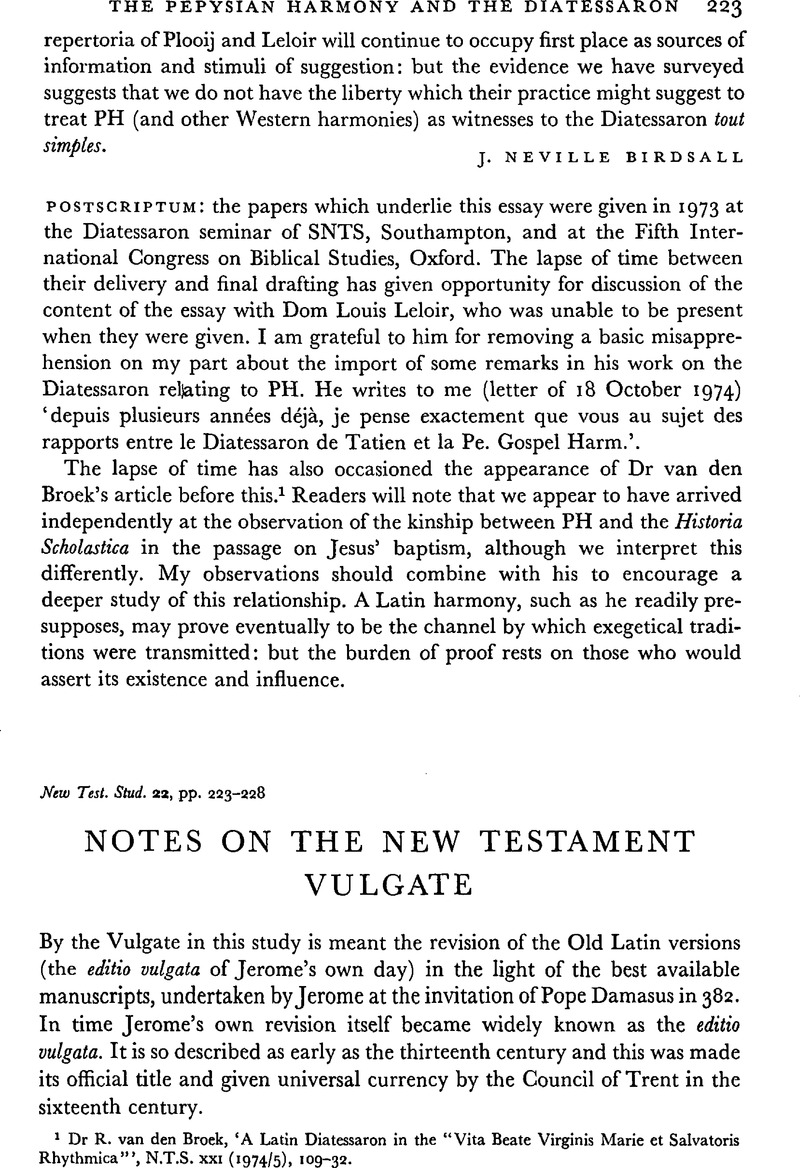No CrossRef data available.
Published online by Cambridge University Press: 05 February 2009

1 The evidence is given by Sparks, H. F. D., ‘Jerome as Biblical Scholar’ in The Cambridge History of the Bible. I: From the Beginnings to Jerome, eds. Ackroyd, P. R. and Evans, C. F. (London, 1970), pp. 510 ff.CrossRefGoogle Scholar
1 There are other peculiarities about the translation of ⋯ρχιερ⋯ς. In Matthew the invariable rendering is princeps sacerdotum (24 times). So it is in Luke (12 times), and in Acts (21 times), the only exceptions being sacerdotes simply (Acts iv. 1, xxii. 30), while in Mark the favourite is summus sacerdos (17 times), the only exceptions being princeps sacerdotum (ii. 26, x. 33, xi. 18), sacerdos only (xiv. 53, though summus sacerdos also occurs in the same verse), pontifex (xv. 11). In Hebrews, as in John, the favourite is pontifex (15 times), the only exceptions being sacerdos, vii. 27, 28, and x. 11, but in this last the variant ἰερε⋯ς is probably being translated.
1 Cf. Reallexikon für Antike und Christentum III 1021, s.v. Digamus.
2 Op. cit., loc. cit.